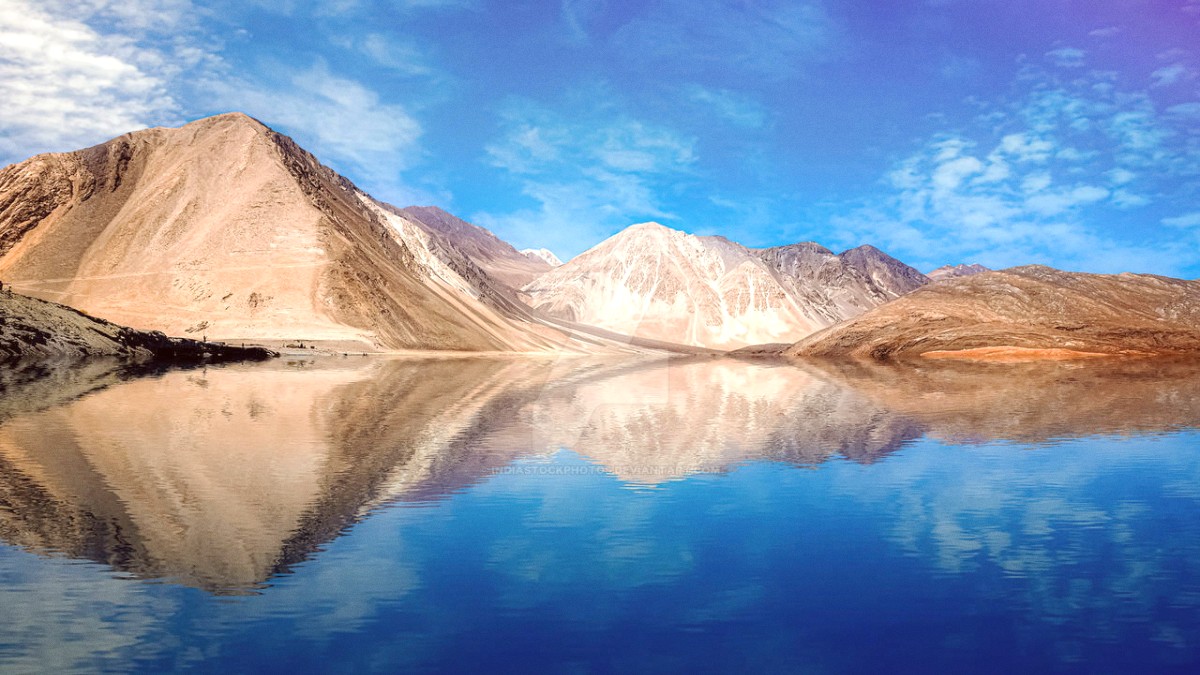
Jammu And Kashmir, India
Most foreign nationals need a visa to enter India. The type of visa you seek depends on your purpose and duration of travel. The e-Tourist Visa is a popular and straightforward option for short leisure trips for many nationalities.
For e-Visas, apply online, submit forms, photos, and passport copies. For regular visas, apply through your country's Indian embassy or consulate, which may involve interviews and additional documents.
Ladakh has restricted areas where special permits (Inner Line Permit for Indian nationals, Protected Area Permit for foreign nationals) are needed. These cover places like Nubra Valley, Pangong Tso, and Tso Moriri. For foreign nationals, obtaining the Protected Area Permit through a registered travel agent in Leh is a common practice. Always carry multiple physical copies of your permit for checkpoints.
Visa fees vary by nationality and duration. Upon arrival, immigration procedures include presenting your passport and visa, fingerprint scanning, and potentially a short interview. Check official government websites like IVisa or VisaHQ for the latest details.
Entry Requirement
Travelers from or transiting through countries with risk of Yellow Fever transmission.
Most travelers unless originating from or transiting through specific high-risk zones.
General Health Recommendation
Measles, Mumps, Rubella (MMR), Diphtheria-Tetanus-Pertussis, Polio.
For Hepatitis A & B, Typhoid, Rabies, Japanese Encephalitis based on travel style.
Before Travel
Travel health clinic or doctor 4-6 weeks prior to your trip.
Vaccinations, AMS prevention medication (Diamox), general health advice for high-altitude travel.
The official currency is the Indian Rupee (INR). ATMs are available in Leh town from major banks. Cash is widely used, especially in smaller establishments and remote areas. Credit/debit cards are accepted at larger hotels and some upscale restaurants in Leh. Always have a mix of cash and a card for payments.
Tipping is not mandatory but welcomed for good service. For restaurants, 5-10% is suitable. For multi-day drivers, ₹200-₹500 per day. Guides may receive ₹500-₹1000+ per day. Hotel staff can receive ₹50-₹100 per day. Tip in local currency and use small denominations.
Flights and accommodation are generally more economical in April-May and September-October.
For excursions to major attractions like Nubra and Pangong Tso, shared taxis reduce per-person transportation costs.
Choose local Ladakhi and Tibetan eateries for authentic and inexpensive meals.
These offer cultural experiences and lower prices, often including home-cooked meals.
Many guesthouses offer filtered water refills for minimal or no cost, reducing plastic waste and expense. Find reusable water bottles here.
Travel costs in Ladakh vary based on style, activities, and season. These estimates exclude international and major domestic flights to Leh.
Daily cost approximately ₹1100-₹3000.
Daily cost approximately ₹3000-₹7800.
Approximate daily cost per person, excluding international and major domestic flights to Leh.
Ladakh's high altitude presents specific health considerations, mainly Acute Mountain Sickness (AMS). General health and safety practices also contribute to a smooth trip.
AMS can affect anyone, regardless of fitness. Symptoms include headache, nausea, dizziness, and fatigue. These typically appear within 6-12 hours of arrival at altitude. Ignoring symptoms can lead to severe, life-threatening forms (HAPE, HACE).
Descent to lower altitude is the most effective treatment if symptoms worsen despite rest and hydration. Never ignore severe symptoms.
Leh has hospitals (SNM Hospital, Mahabodhi Karuna Charitable Hospital) for emergencies. For severe cases, evacuation to Srinagar or Delhi may be needed. Pharmacies are present in Leh.
SNM Hospital: +91-1982-252014
Remote areas have limited medical facilities.
Do not drink tap water. Use bottled water or a Portable purification filter. Eat hot, freshly cooked food from reputable establishments. Avoid raw vegetables unless certain of hygiene.
Many guesthouses offer filtered water refills.
Traveller's diarrhea can occur; practice strict hygiene.
Ladakh is a reputation for safety with low crime rates. Leh town is generally safe for walking, even at night. Risks relate more to the environment (altitude, terrain) than crime.
General safety precautions apply to valuables.
Scams are rare; be cautious of "too good to be true" offers.
| Hazard | Description | Impact on Travel |
|---|---|---|
| Landslides | Possible on highways during heavy rain or snowmelt. | Road closures and delays. |
| Flash Floods | Rare, but localized cloudbursts can cause sudden floods. | Localized disruptions, especially in narrow valleys. |
| Snow Blockages | High passes are prone to heavy snowfall. | Prolonged road closures in winter and early spring. |